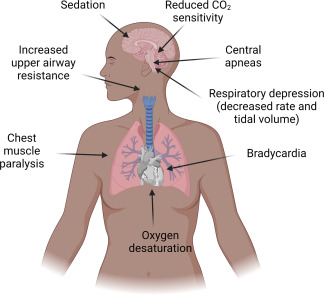A woman with severe preeclampsia is receiving a magnesium sulfate infusion. The nurse becomes concerned after assessment when the woman exhibits:
a sleepy, sedated affect.
absent ankle clonus.
a respiratory rate of 10 breaths/min.
deep tendon reflexes of 2+.
The Correct Answer is C
Choice A reason: A sleepy, sedated affect is not a concerning sign, as it is a common side effect of magnesium sulfate. Magnesium sulfate is a central nervous system depressant that can cause drowsiness, lethargy, and reduced alertness.
Choice B reason: Absent ankle clonus is not a concerning sign, as it indicates a normal neuromuscular response. Ankle clonus is a rhythmic jerking of the foot when the ankle is dorsiflexed. It is a sign of hyperreflexia, which can occur in severe preeclampsia due to increased blood pressure and cerebral edema.
Choice C reason: A respiratory rate of 10 breaths/min is a concerning sign, as it indicates respiratory depression. This is a serious complication of magnesium sulfate toxicity, which can lead to respiratory arrest and death. The nurse should monitor the woman's respiratory rate closely and report any signs of respiratory distress.
Choice D reason: Deep tendon reflexes of 2+ are not a concerning sign, as they indicate a normal neuromuscular response. Deep tendon reflexes are graded from 0 to 4, with 2 being the average. Magnesium sulfate can cause hyporeflexia or areflexia, which are signs of magnesium sulfate toxicity.

Nursing Test Bank
Naxlex Comprehensive Predictor Exams
Related Questions
Correct Answer is D
Explanation
Choice A reason: Limiting fluid intake throughout the day is not recommended, as dehydration can worsen nausea and vomiting. Instead, pregnant women should sip fluids gradually throughout the day to maintain hydration. Proper hydration supports digestion and helps prevent complications like electrolyte imbalances. Clinical guidelines emphasize the importance of maintaining adequate fluid intake during pregnancy
Choice B reason: Drinking a glass of water with a fat-free carbohydrate before getting out of bed in the morning is a good strategy to prevent nausea and vomiting, as it can stabilize the blood sugar level and prevent an empty stomach. However, it is not the best answer, as it does not address the dietary needs throughout the day.
Choice C reason: Increasing the intake of high-fat foods is not recommended, as it can worsen nausea and vomiting. High-fat foods are harder to digest and can cause gastric irritation and reflux. The pregnant woman should choose low-fat, bland, and easy-to-digest foods.
Choice D reason: Eating small, frequent meals every 2 to 3 hours is the best approach to managing nausea and vomiting during pregnancy. This strategy helps stabilize blood sugar levels and prevents the stomach from becoming too empty or too full, both of which can trigger nausea. Clinical guidelines widely support this dietary adjustment as a primary intervention for nausea and vomiting in pregnancy
Correct Answer is B
Explanation
Choice A reason: This is incorrect because primary dysmenorrhea is menstrual pain that is not associated with any underlying condition. It usually begins with the onset of menstruation and lasts for a few days. It does not cause pain during intercourse or infertility.
Choice B reason: This is correct because endometriosis is a condition where the endometrial tissue that normally lines the uterus grows outside the uterus, such as on the ovaries, fallopian tubes, or pelvic organs. It causes chronic inflammation, scarring, and adhesions that can result in severe pain during menstruation and intercourse, as well as infertility.
Choice C reason: This is incorrect because secondary dysmenorrhea is menstrual pain that is caused by an underlying condition, such as fibroids, pelvic inflammatory disease, or adenomyosis. It usually develops later in life and lasts longer than primary dysmenorrhea. It may or may not cause pain during intercourse or infertility, depending on the condition.
Choice D reason: This is incorrect because PMS stands for premenstrual syndrome, which is a group of physical and emotional symptoms that occur before menstruation. It may include mood swings, irritability, bloating, headaches, or breast tenderness. It does not cause severe pain during menstruation or intercourse, or infertility.
Whether you are a student looking to ace your exams or a practicing nurse seeking to enhance your expertise , our nursing education contents will empower you with the confidence and competence to make a difference in the lives of patients and become a respected leader in the healthcare field.
Visit Naxlex, invest in your future and unlock endless possibilities with our unparalleled nursing education contents today
Report Wrong Answer on the Current Question
Do you disagree with the answer? If yes, what is your expected answer? Explain.
Kindly be descriptive with the issue you are facing.
